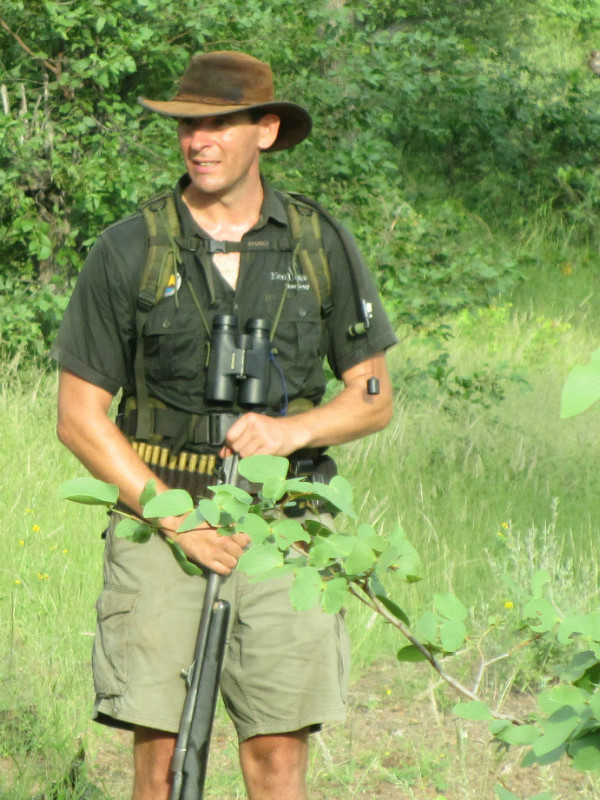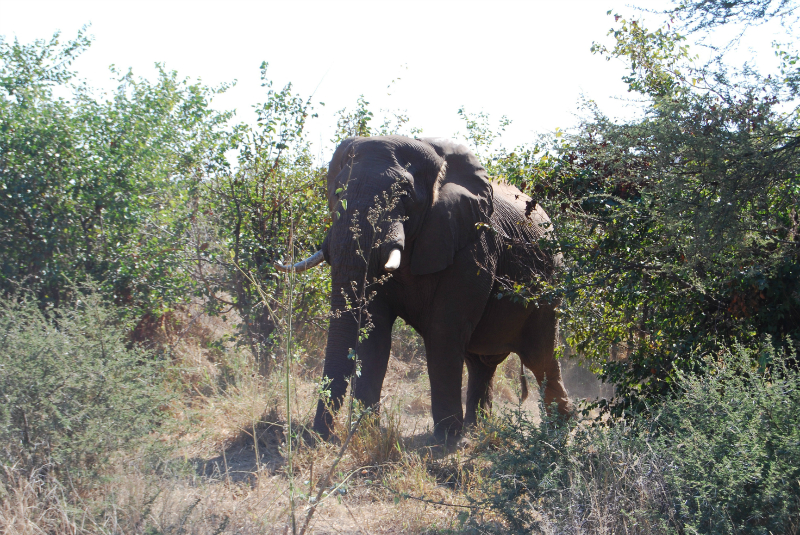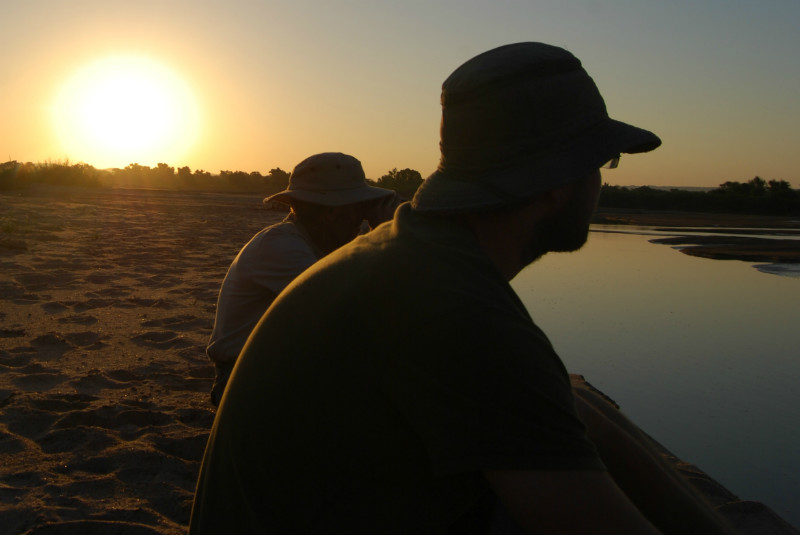After becoming a safari guide I undertook further training to qualify as a trails guide which meant that I could start doing walking safaris. Here are a few things that I leant during my time in training at Makuleke, Kruger National Park.
1. To walk with my head up
Only after doing the course had I realised that I had spent my life walking with my head down. As a trails guide I was taught to look up and ahead. Where I put my feet is actually predetermined by what I saw some ten metres in front of you a few seconds before.
As a trainee trails guide I was taught to scan the bush with my eyes in the shape of a cross. The technique was to first look far ahead, then to bring the focus back in one line towards my immediate position and then flick them to the right and then scan across to the left.
The reason for going from right to left was because that is the opposite to as a westerner I would read. As a result I would concentrate more and have a better chance of spotting something out of the ordinary. Whilst doing this the head is kept still with the eyes doing the moving.
As I scan ahead of me I would look for things of interest and signs of danger. This may include tracks of dangerous game, twigs to step over, scat, aardvark holes, snakes and so on. It becomes second nature, well to some. If I had a pound for every time I missed one of the aforementioned I’d be set for retirement.
2. I have primeval instincts
I don’t care if somebody has spent all their life in the city or for that matter in a city locked under the stairs playing computer games. As soon as they’re put in the bush and taught the basics of tracking a primeval memory is triggered within.
When my ancestral past was awakened there was an immediate change in how I behaved. I automatically spoke in a whispered hush, I walked more softly and all my senses went into over drive as I tracked wild animals through the African bush.
Soon I was smelling animals before I saw them, from the obvious damp musty smell of elephants, the familiar bovine smell of buffalo and the sweet popcorn scent of a marking leopard.
I started to notice things I’d never given a second thought to before. Such as the tracks of an insect which could say so much, for example the tracks of a nocturnal insect over the spoor of a lion, this immediately told me that the lion walked there during the night and not that morning.
3. Real responsibility
Naturally the best place to learn about being a trails guide was in the bush. As a group of wannabe guides we would go for long bush walks with each walk being delivered by a different trainee lead and back-up guide.
I found that being up front with the responsibility for those in your charge was exhausting. The concentration required for the three to five hours of the walk was similar to hurtling down the motorway at 90-100 mph.
A risky business that can go horribly wrong if your concentration fails. And like the motorway a mistake in the field could lead to a criminal investigation.
When I led my guests into the African bush I was under no illusions that I had to concentrate, their safety and that of the animals depended up on it.

4. To ask why
I don’t know when I stopped being curious or why I did. But this course taught me to be curious all over again, as curious as a child.
All of the time I was encouraged to ask five simple questions that I had asked a million times before when I was growing up to the annoyance of those around me.
Who, what, why, when and where. What is that? Why did that happen? Who walked here? Where were they going? Why did they jump?
5. It’s one boot at a time
When out on a walking safari as a guest I was able to relax, let my mind wander and take photographs. When we took a break, depending upon the time of day, I would find some shade or a spot in the sun. As I wasn’t on duty as either the lead or back-up guide I would make myself comfortable and sometimes even have a snooze.
Part of making myself comfortable was to sort out my feet. After hours of walking in cramped boots they would need air. I was told to take my boots and socks off and put them on again one foot at a time. This was an old military tactic for not being caught with your trousers down.
I don’t think we were every going to come into contact with poachers but never say never. This was a precaution in case we were disturbed at rest by dangerous game and had to quickly move.
Get involved
For everything you want to know about becoming a safari guide please check out our definitive guide on what the job entails.
Awaken your primeval instinct by trying out one of the Afrcan wildlife courses we have on offer.





 Previous Post
Previous Post
